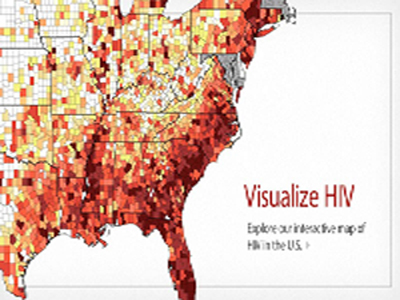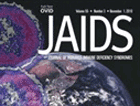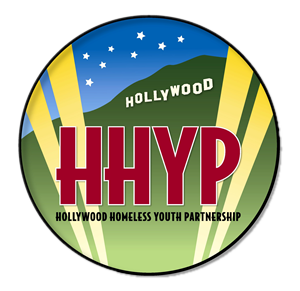|
Download the PDF here: [Download not found]
Nass, Heidi JD***; Rinaldo, Charles R. Jr PhD; Shlipak, Michael G. MD, MPH; Tracy, Russell PhD; Valcour, Victor MD; Vance, David E. PhD; Walston, Jeremy D. MD****; Volberding, Paul MD###; For the OAR Working Group on HIV and Aging
Abstract
Abstract: HIV risk behaviors, susceptibility to HIV acquisition, progression of disease after infection, and response to antiretroviral therapy all vary by age. In those living with HIV, current effective treatment has increased the median life expectancy to >70 years of age. Biologic, medical, individual, social, and societal issues change as one ages with HIV infection, but there has been only a small amount of research in this field. Therefore, the Office of AIDS Research of the National Institutes of Health commissioned a working group to develop an outline of the current state of knowledge and areas of critical need for research in HIV and Aging; the working groups’ findings and recommendations are summarized in this report. Key overarching themes identified by the group included the following: multimorbidity, polypharmacy, and the need to emphasize maintenance of function; the complexity of assessing HIV versus treatment effects versus aging versus concurrent disease; the inter-related mechanisms of immune senescence, inflammation, and hypercoagulability; the utility of multivariable indices for predicting outcomes; a need to emphasize human studies to account for complexity; and a required focus on issues of community support, caregivers, and systems infrastructure. Critical resources are needed to enact this research agenda and include expanded review panel expertise in aging, functional measures, and multimorbidity, and facilitated use and continued funding to allow long-term follow-up of cohorts aging with HIV.
EXECUTIVE SUMMARY
The development and application of effective antiretroviral therapy (ART) for HIV has allowed many infected persons to live to an older age. In addition, an increasing proportion of incident HIV infections are occurring in older adults as members of this age group are the least likely to practice safe sex and late-life changes in the reproductive tract and immune system may enhance susceptibility to HIV acquisition in seniors. Thus, by 2015, half the people living with HIV infection in the United States will be 50 years of age or older. Research in sub-Saharan Africa suggests that these trends are also occurring in more resource-limited settings.1,2 Further, there is an emerging consensus that HIV and/or its treatment affects the process of aging and/or the development of illnesses typically associated with advanced age. When compared with behaviorally and demographically similar HIV-uninfected individuals, people with HIV infection, even those receiving effective ART with suppression of virus to levels below typical detection limits, experience excess morbidity and mortality.3-6 On average, a 20-year old initiating ART may have already lost one-third of the expected remaining years of life compared with demographically similar HIV-uninfected persons.7
Although AIDS-defining illnesses are increasingly rare in those with ART-suppressed HIV, the list of HIV-associated non-AIDS (HANA) conditions is growing. A common theme among currently identified HANA conditions is their association with advancing age and chronic inflammation. These include cardiovascular disease,8 a number of infectious and noninfectious cancers,9,10 osteopenia/osteoporosis,11 liver disease,12 renal disease,13,14 and neurocognitive decline. It is uncertain whether people with HIV infection develop these conditions earlier in their life course because the aging process itself is accelerated (ie, is HIV speeding pathways of aging in every organ?), represents a cohort effect15, or whether HIV is an additive risk factor (ie, is HIV similar to high cholesterol which does not make one “age” faster but increases the risk of cardiovascular events?).
“Any comparison between people with and without HIV infection must be accomplished with careful study design as these populations tend to differ in a number of behavioral and biologic factors that are known to affect the aging process.” People aging with HIV infection are more likely to continue substance use (tobacco, alcohol, opioids, and other psychoactive substances).16 People with HIV infection are also more likely to be coinfected with chronic viruses such as hepatitis C, which interacts with HIV or with alcohol use to lead to more rapid cirrhosis and more rapid development of hepatocellular carcinoma. People with HIV infection differentially represent sexual and racial minorities with constrained economic and social resources. As a result, issues of homelessness, food insecurity, and social isolation may exacerbate substance use and complicate the aging process broadly-physically, emotionally, and socially.
The pathophysiology leading to morbidity and mortality among those aging with HIV is only beginning to be elucidated. Evidence from the Strategies for Management of Antiretroviral Therapy (SMART) trial and other observational studies suggests that HIV infection and ART influence morbidity and mortality through effects on inflammation, treatment-related toxicity (which includes abnormal fat distribution, renal and kidney dysfunction, and neuropathy), interactions with other chronic viral infections, and co-morbid diseases typically associated with advanced age. This complex and often subtle pathophysiology also interacts with prolonged substance use and other psychosocial and health behaviors more commonly experienced by those with HIV infection. As a result, aging HIV-infected persons exhibit an excess burden of co-morbid conditions and the premature onset of a number of clinical symptoms and syndromes that are often associated with advanced aging, multimorbidity, polypharmacy, limited reserve, and functional (physical and cognitive) decline (Fig. 1). Addressing these aspects of heath care is the primary domain of the subspecialty of Geriatric Medicine which can help inform the research agenda for HIV and the clinical management of those aging with HIV infection.17
Recognizing the issues and needs of the evolving HIV-infected population and the potential insights provided through the pathophysiology of aging (Gerontology) and the care of older adults (Geriatrics), September 18th has been designated National HIV/AIDS and Aging Awareness Day since 2008, and a White House Conference on HIV and Aging was held in 2010.19 However, the extent to which Geriatric principles can be directly applied to HIV-infected individuals is unknown. Although parallels with other chronic diseases such as cardiovascular disease or diabetes are compelling, several factors set apart those aging with HIV. At the moment, the population aging with HIV infection is predominantly middle aged. Many geriatric syndromes of greatest concern in the general population, including dementia, frailty, and falls, are not common among those younger than 65 years and are frequently seen only in those 80+ years of age. Thus, we may not fully appreciate the importance of these conditions until a larger proportion of the population of those aging with HIV infection reaches older thresholds. The Geriatric concepts of multimorbidity, personalized care, maximizing function, and deriving integrated management strategies are, however, very likely relevant to the care of the growing middle to older age adult population with HIV.
To further address the issues of aging with HIV infection, the National Institute of Health Office of AIDS Research assembled a working group with the goal of assessing what is known and unknown and what the priorities should be for research at the interface of HIV, aging, and multimorbidity. The task force met in a face-to-face meeting in April 2011, and assigned breakout groups to address 4 specific areas-(1) triggers and underlying mechanisms of aging in those with HIV; (2) biomarkers/prognostic indices of aging and illness; (3) design and conduct of observational and intervention studies; and (4) societal, mental health, behavioral and care giving issues. The working group findings are summarized in this white paper. |






